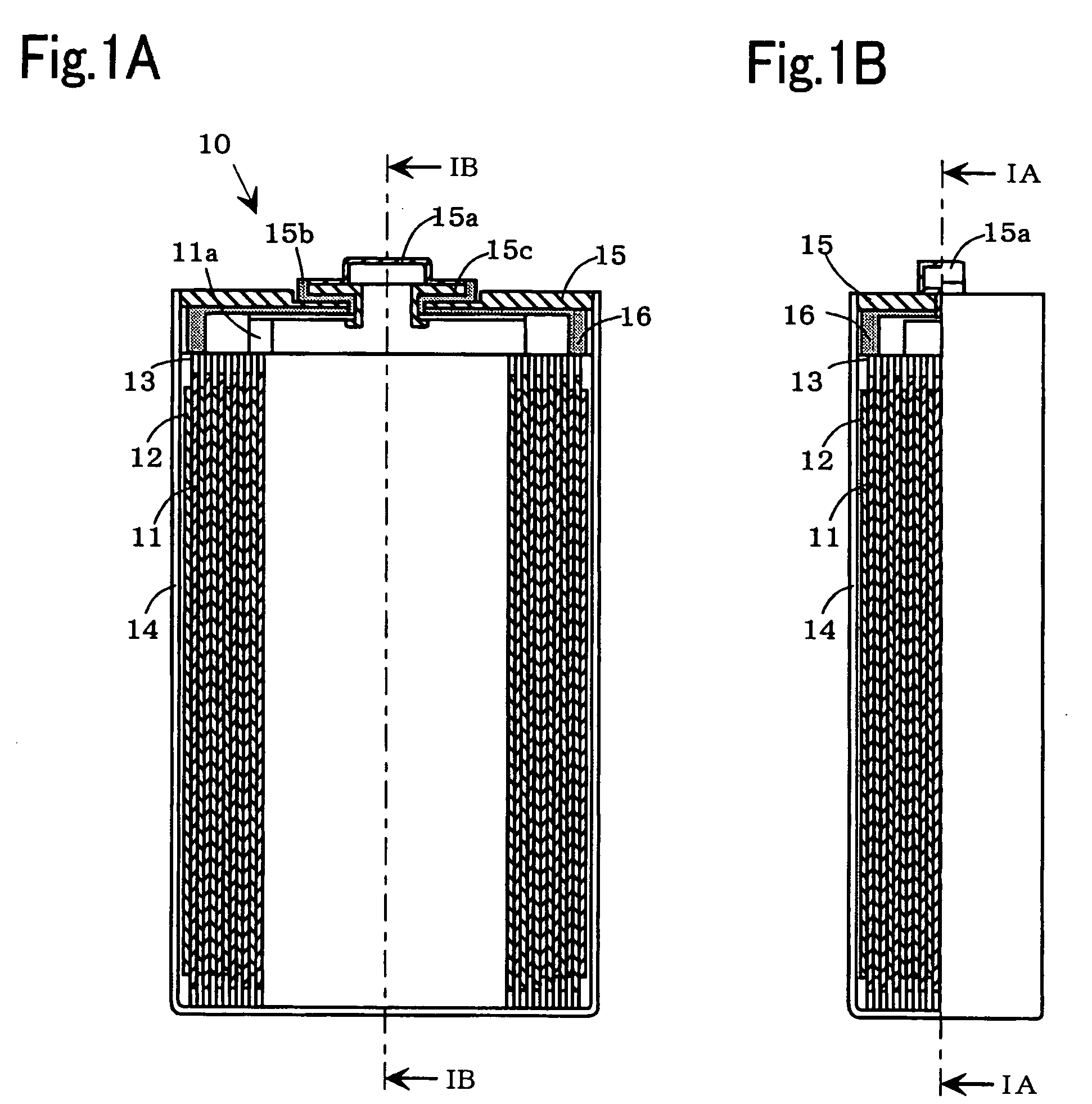Nonaqueous electrolyte battery
a non-aqueous electrolyte, battery technology, applied in the direction of non-aqueous electrolyte cells, cell components, electrochemical generators, etc., can solve the problems of deterioration of the characteristics of the positive electrode active material, adversely affecting the battery characteristics, and the inability to say that the storage characteristics of non-aqueous electrolyte are satisfactory at high temperature, so as to prevent the effect of decreasing and maintaining
- Summary
- Abstract
- Description
- Claims
- Application Information
AI Technical Summary
Benefits of technology
Problems solved by technology
Method used
Image
Examples
Embodiment Construction
[0016] The typical modes of embodiment of the invention shall be described hereafter. These modes of embodiment, however, are by no means restrictive of the scope of the invention as various modifications and variations may be made without deviating from the scope of the invention.
1. Negative Electrode Preparation
[0017] First, a scaly natural graphite powder (e.g. a powder with an average particle diameter of 20 μm, the (002) plane spacing (d002) thereof being 3.358 Å and the crystallite size in the c axial direction (Lc) being 1,000 Å), and a styrene-butadiene rubber (SBR) dispersion (solid matter content 48%) to serve as binder, were dispersed in water. Then, carboxymethylcellulose (CMC) was added as a thickener to produce a negative electrode slurry, in which the solid matter mass ratio, namely graphite:SBR:CMC, was adjusted in order that such ratio after drying would approximately be 100:3:2.
[0018] Negative electrode active material layers were then formed by applying the ne...
PUM
| Property | Measurement | Unit |
|---|---|---|
| particle diameter | aaaaa | aaaaa |
| thickness | aaaaa | aaaaa |
| packing density | aaaaa | aaaaa |
Abstract
Description
Claims
Application Information
 Login to View More
Login to View More - R&D
- Intellectual Property
- Life Sciences
- Materials
- Tech Scout
- Unparalleled Data Quality
- Higher Quality Content
- 60% Fewer Hallucinations
Browse by: Latest US Patents, China's latest patents, Technical Efficacy Thesaurus, Application Domain, Technology Topic, Popular Technical Reports.
© 2025 PatSnap. All rights reserved.Legal|Privacy policy|Modern Slavery Act Transparency Statement|Sitemap|About US| Contact US: help@patsnap.com


